#Cultural Heritage
Explore tagged Tumblr posts
Text
"Growing up, Mackenzee Thompson always wanted a deeper connection with her tribe and culture.
The 26-year-old member of the Choctaw Nation said she grew up outside of her tribe’s reservation and wasn’t sure what her place within the Indigenous community would be.
Through a first-of-its-kind program, Thompson said she’s now figured out how she can best serve her people — as a doctor.
Thompson is graduating as part of the inaugural class from Oklahoma State University’s College of Osteopathic Medicine at the Cherokee Nation. It’s the first physician training program on a Native American reservation and in affiliation with a tribal government, according to school and tribal officials.
“I couldn’t even have dreamed this up,” she said. “To be able to serve my people and learn more about my culture is so exciting. I have learned so much already.”
Thompson is one of nine Native graduates, who make up more than 20 percent of the class of 46 students, said Dr. Natasha Bray, the school’s dean. There are an additional 15 Native students graduating from the school’s Tulsa campus.
The OSU-COM graduates include students from 14 different tribes, including Cherokee, Choctaw, Muscogee, Seminole, Chickasaw, Alaska Native, Caddo, and Osage.
Bray said OSU partnered with the Cherokee Nation to open the school in 2020 to help erase the shortage of Indigenous doctors nationwide. There are about 841,000 active physicians practicing in the United States. Of those, nearly 2,500 — or 0.3 percent — are Native American, according to the Association of American Medical Colleges.
When American Indian and Alaska Native people visit Indian Health Service clinics, there aren’t enough doctors or nurses to provide “quality and timely health care,” according to a 2018 report from the Government Accountability Office. On average, a quarter of IHS provider positions — from physicians to nurses and other care positions –are vacant.
“These students here are going to make a generational impact,” Cherokee Nation Principal Chief Chuck Hoskin Jr. told the students days before graduation. “There is such a need in this state and in this region for physicians and this school was created out of a concern about the pipeline of doctors into our health system.”
The Cherokee Nation spent $40 million to build the college in its capital of Tahlequah. The walls of the campus feature artifacts of Cherokee culture as well as paintings to remember important figures from Cherokee history. An oath of commitment on the wall is written in both English and Cherokee.
The physician training program was launched in the first year of the pandemic.
Bray said OSU and Cherokee leadership felt it was important to have the school in the heart of the Cherokee Nation, home to more than 141,000 people, because students would be able to get experience treating Indigenous patients. In Tahlequah, students live and study in a small town about an hour east of Tulsa with a population of less than 24,000 people.
“While many students learn about the problems facing these rural communities,” Bray said. “Our students are getting to see them firsthand and learn from those experiences.”
While students from the college are free to choose where to complete their residency after graduation, an emphasis is placed on serving rural and Indigenous areas of the country.
There’s also a severe lack of physicians in rural America, a shortage that existed before the COVID-19 pandemic. The Association of American Medical Colleges has projected that rural counties could see a shortage between 37,800 and 124,000 physicians by 2034. An additional 180,000 doctors would be needed in rural counties and other underserved populations to make up the difference.
Bray said OSU saw an opportunity to not only help correct the underrepresentation of Native physicians but also fill a workforce need to help serve and improve health care outcomes in rural populations.
“We knew we’d need to identify students who had a desire to serve these communities and also stay in these communities,” she said.
Osteopathic doctors, or DOs, have the same qualifications and training as allopathic doctors, or MDs, but the two types of doctors attend different schools. While MDs learn from traditional programs, DOs take on additional training at osteopathic schools that focus on holistic medicine, like how to reduce patient discomfort by physically manipulating muscles and bones. DOs are more likely to work in primary care and rural areas to help combat the health care shortages in those areas.
As part of the curriculum, the school invited Native elders and healers to help teach students about Indigenous science and practices...
Thompson said she was able to bring those experiences into her appointments. Instead of asking only standard doctor questions, she’s been getting curious and asking about her patient’s diets, and if they are taking any natural remedies.
“It’s our mission to be as culturally competent as we can,” she said. “Learning this is making me not only a better doctor but helping patients trust me more.”
-via PBS NewsHour, May 23, 2024
#indigenous#native american#cherokee#choctaw#cherokee nation#medical school#united states#doctors#medical news#medical student#cultural competence#cultural heritage#public health#health care#medicine#good news#hope#oklahoma
1K notes
·
View notes
Text
In the weeks since Hamas' Oct. 7 attack, Israeli airstrikes on the Gaza Strip have killed more than 15,000 Palestinians, according to Gaza's health ministry, and destroyed thousands of homes in the territory.
And there have also been tremendous losses to the region's ancient and globally significant cultural heritage. The region was a hub for commerce and culture under Egyptian, Greek, Roman and Byzantine rule. It remained influential for centuries thereafter.
A recent survey by the group Heritage for Peace details the damage done so far to more than 100 of these landmarks in Gaza since the start of the present conflict.
The casualties include the Great Omari Mosque, one of the most important and ancient mosques in historical Palestine; the Church of Saint Porphyrius, thought to be the third oldest church in the entire world; a 2,000-year-old Roman cemetery in northern Gaza excavated only last year; and the Rafah Museum, a space in southern Gaza which was dedicated to teaching about the territory's long and multi-layered heritage — until it was hammered by airstrikes early on in the conflict. (...)
"If this heritage be no more in Gaza, it will be a big loss of the identity of the people in Gaza," said Isber Sabrine, president of Heritage for Peace, in an interview with NPR. (...)
"The people in Gaza, they have the right to keep and to save this heritage, to tell the history, the importance of this land," he said.
The 1954 Hague Convention, agreed to by Palestinians and Israelis, is supposed to safeguard landmarks from the ravages of war. But landmarks in Gaza have been destroyed by Israeli strikes in earlier rounds of fighting. Dozens of sites, including the now-obliterated Great Omari Mosque, suffered damage in 2014. A report by UNESCO, the United Nations body that designates and protects World Heritage sites, cites further destruction to cultural and historic sites in Gaza in 2021. (...)
Destruction of historical sites and other cultural sites is part of genocide, it's the destruction of the proof of a people's relationship to the land and a horrible emotional blow at the community. UNESCO must act immediately against Israel's destruction of Palestinian heritage, and every country and international organism must expel Israel and impose sanctions to make the genocide and apartheid end.
#💬#palestine#gaza#israel#free palestine#world heritage#cultural heritage#historical sites#archaeology#cultures
2K notes
·
View notes
Text
During the first six months of the current war on Gaza, the Israeli military destroyed about 60 percent of the Strip’s cultural heritage sites and monuments. This toll includes the Bronze Age settlement of Tell el-‘Ajjul, the St. Hilarion monastery founded nearly 1,700 years ago, and Pasha’s Palace built in the 13th century and used recently as an archaeological museum. According to many Palestinian and civil rights organizations, this destruction is deliberate. I’m an archaeologist living in the West Bank who has written about cultural heritage destruction and antiquities looting. I serve as the secretary general of the International Council on Monuments and Sites–Palestine and of the Society for Palestinian Archaeology. Over 34 years, I have conducted several research projects and interviewed hundreds of Palestinians involved in illegal looting, trading, and trafficking of ancient objects. The losses unfolding now in Palestine, however, are unprecedented in scale and speed. International agreements enshrine the protection of cultural heritage and recognize its destruction as a war crime. But agencies responsible for policing these agreements have been conspicuously and inexcusably absent from the current conflict. No doubt protecting historical monuments and archaeological sites is challenging amid a war, and humanitarian efforts should prioritize saving lives. Yet UNESCO and other heritage organizations have tools and tactics to deter the destruction of cultural assets in conflict zones. Why, then, are these organizations neglecting to protect cultural heritage in Palestine?
[...]
According to Resolution 242, passed by the United Nations Security Council in 1967, the Palestinian territories, which include the West Bank, East Jerusalem, and the Gaza Strip, are under occupation. As the occupying power, Israel must take necessary measures to safeguard and protect the cultural and natural heritage of the Palestinian territories. During its 2023–2024 assault on Gaza, Israel has been credibly accused of doing the opposite: systematically destroying Gaza’s cultural heritage as part of its broader genocide of Palestinians in Gaza. As of February, Israeli forces have destroyed at least 200 archaeological sites and buildings of cultural and historical significance in the Gaza Strip, according to a report from the Palestinian Ministry of Culture.
6 June 2024
643 notes
·
View notes
Text
#blackisbeautiful#ethiopian beauty#ethiopia#amhara culture#amharic people#habesha#blackwomen#blackbeauty#blackwomanmagic#blackwomenaredivine#blackwomenarestunning#african culture#blackandbeautiful#cultural practices#cultural heritage#cultural photoshoot#african heritage#african diaspora#africa#africanwomen#africanbeauty#african ancestry#africamatters#afrocentrism#blackgirlmagic#black people#blackgirlaesthetic#black joy#blackpride#blacktumblr
444 notes
·
View notes
Text
163 notes
·
View notes
Text
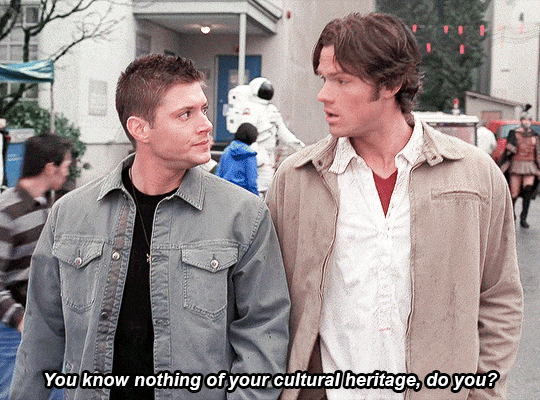
Here's over 500 horror film screenplays so you can learn about our shared cultural heritage.
Update 09/29/2024:
The Phantom of the Opera (1925)
Vampyr (1932)
Dracula's Daughter (1936)
Repulsion (1965)
Straw Dogs (1971)
Frenzy (1972)
The Fury (1978)
Magic (1978)
Tourist Trap (1979)
Zombie Flesh Eaters [Zombi 2] (1979)
Ghost Story (1980)
Humanoids from the Deep (1990)
Phobia (1980)
The Watcher in the Woods (1980)
Dead & Buried (1981)
The Beast Within (1982)
10 to Midnight (1983)
Something Wicked This Way Comes (1983)
Razorback (1984)
The Stuff (1985)
Maximum Overdrive (1986)
The Texas Chainsaw Massacre 2 (1986)
Blood Diner (1987)
Brain Damage (1988)
Dead Heat (1988)
Thinner (1996)
Deep Blue Sea (1999)
[gif source]
#mostly scans#updated a few times a year#this link is always the most current list#horror#scripts#screenplays#cultural heritage#spn adjacent#dean's pop culture
421 notes
·
View notes
Text

Podhorácko Miku!
Jumping on the cultural representation bandwagon (must say I had to look her up...) with a quick doodle of one of the least obvious Czech / Moravian folk costumes.
I mean, original idea was Valašsko / Moravian Wallachia (part of my own family heritage) but I feel like that's the second most obvious Czech folk costume artists reach for every time they want to be different and avoid the super-obvious Slovácko... Podhorácko is a rather loosely defined border region between South Moravia and Vysočina / the Highlands, where it seems the folk costume doesn't differ too much from Horácko proper and what sets the region apart is rather geography and dialect.
One thing to bear in mind is that folk costumes were never uniforms, and Podhorácko appears to be one of the regions that underline the individuality. I zoomed in on Tišnov (among other reasons like liking the town, the red and white striped skirts are striking and easy to draw) and stole some elements from an old photo of very low quality which I'm guessing is from the 1890s (based on the non-folk-costumed lady in the back), and even there every single person seems to be wearing something slightly different.
Upon reflection, not sure where I came across the beribboned sleeves because Tišnov it ain't. Ah well. If someone with better artistic skills wants to take her on, please do. Yay for cultural representation. 😀
#hatsune miku trend#hatsune miku#folk costume#traditional dress#czech#czech folklore#all things czech#czechia#moravia#moravian folk costume#podhorácko#moravian#marmota tries to keep drawing#czech republic#cultural representation#cultural heritage#cultural clothing#čumblr#miku worldwide#brazilian miku trend#brazilian miku meme#czech miku
132 notes
·
View notes
Text


#african diaspora#rewriting history#accomplishments#systemic oppression#historical revisionism#cultural heritage#racial superiority#discrimination#historical erasure#colonialism#cultural suppression#racial injustice
855 notes
·
View notes
Text
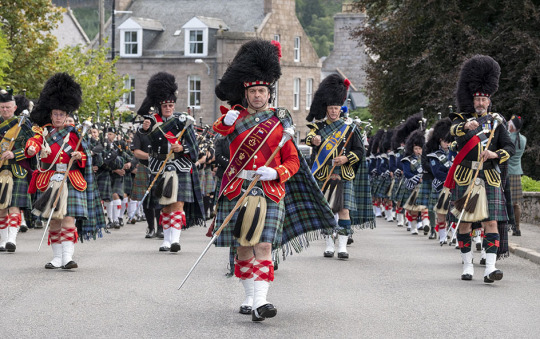
A Scottish pipe band leads the way to the Highland Games in Ballater
#Ballater#Aberdeenshire#Scottish Highlands#UK#pipe band#High Street#parade#Highland Games#tartans#men in kilts#cultural heritage#tradition#ancestry#nostalgia#Scotland
122 notes
·
View notes
Text

The ruins in the photo were the House of Culture in the village of Tomaryne, Kherson region. Yesterday, it was destroyed by a guided aerial bomb. The building was an important center of cultural life for the local residents, making the attack on it an alleged violation of the Hague Convention. Overall, Ukraine’s cultural heritage suffers nearly every day. At least 1,096 sites have been damaged as a result of Russian aggression.
Sources: Gyunduz Mamedov, olexandrprokudin/Telegram
93 notes
·
View notes
Text
Soul (also referred to as Two Soul or Du/Bisoul)

digital recreation by this user.
Soul is a pan-african identity that revolves around distinct black and african american experiences where one’s identity is made up of two warring souls, the gender and the body.
From the creator, "my cognition (...) is male and is acting upon my female body (...) finding a way for them to just coexist is my personal gender journey in a lot of ways (...) I feel like i want to learn to live in her, I feel like I am in her, but I am he."
He refers to the gender while Her refers to the body, both being separate souls that exists within the identity.
Soul in this case can be described deeper by examining how black people are denied gender roles due to being black and being classified as hyper-masculine. Soul is the accumulation of experiences of both gender and blackness that intertwine and create complex considerations when questioning and living as a transgender person. Soul is the creation of black roles that do not conform to the binary and do not establish a patriarchy or matriarchy.
Pinkparthenon says that his gender is being a black trans man, but his body is a black woman, and he has no ambition to "fight being female". He states that he might be masculinizing himself because he is black and not because he is a man, but confirms in a later video that he is a trans man of Soul, and that the two halves of the identity are influenced heavily by blackness.
When describing it further, he says "You are not America, you are the black person. America acts upon you in such a way it almost is you in some ways," (vice versa) which may mean that Soul, in addition to meaning that you are two halves, can mean that you are the black body and your gender acts upon your body.

my rendition of the flag.
Soul as a term originated from a personal therapy session Pinkparthenon had, inspired by a quote from W.E.B Dubois' book called The Souls of Black Folk, and realized with the connection to Soul music and Soul food.
The language tied to Soul is Black English (or African American English), and people of Soul have experiences with code switching which sometimes feels as though they are othered by people who do not understand them - futhering themselves from the aspects of western gender.
When referring to someone who is "of Soul" and mentioning the identity, Soul as an identity will always be capitalized. Someone can also be Soul, and does not have to adhere to the convention of saying "blank of Soul". Other terms like Soul sib, Soul sista, Soul brotha, or Soul man/woman, are used as descriptors alongside Soul.
@radiomogai @beyond-mogai-pride-flags
#queer#liom#mogai#liom term#mogai term#flag#flag coining#pride flag#mogai flag#flag making#black tumblr#black people#black positivity#culture#cultural heritage#cultural gender#soul music#soul food#aave#black english#racism#misogynoir#transgender#trans#gender#term coining#liom coining#mogai coining#gender coining#xeno coining
40 notes
·
View notes
Text
"Discarded shells from restaurants and hotels are being used to restore damaged oyster ecosystems, promote biodiversity and lower pollution in the city’s bays...
Nestled in between the South China Sea and the Pearl River Delta, Hong Kong has been seen historically as an oyster hotspot. “They have been supporting our livelihood since ancient times,” says Anniqa Law Chung-kiu, a project manager at the Nature Conservancy (TNC) in Hong Kong. “Both oysters and their shells are treasures to humans.”
Over the past five decades, however, the city’s sprawling urban development, water pollution, as well as the over-harvesting and frequent seafloor dredging by the lime industry – which uses the crushed shells to make construction material – have destroyed Hong Kong’s oyster habitats and made the waters less hospitable for biodiversity.
The more oyster colonies falter, the worse the problem gets: oysters are filter feeders and purify water by gobbling up impurities. Just one Hong Kong oyster can filter up to 200 litres of water a day, more than any other known oyster species. But decades of rapid industrialisation have largely halted their water-purifying services.
The depletion of Hong Kong’s natural oyster reefs also affects the ability of local farmers to sustainably cultivate their oysters in a healthy environment, denting the reputation of the city’s 700-year oyster farming tradition, designated by Unesco as an “intangible cultural heritage”.
Inhabitants of the coast feel abandoned, says Ken Cheng Wai-kwan, the community leader of Ha Pak Nai on Hong Kong’s Deep Bay, facing the commercial city of Shenzhen in China. “This place is forgotten,” Cheng says. “Oysters have been rooted here for over 400 years. I ask the question: do we want to lose it, or not?”
A group of activists and scientists are taking up the challenge by collecting discarded oyster shells and recycling them to rebuild some of the reefs that have been destroyed and forgotten in the hope the oysters may make a comeback. They’ve selected locations around the island where data they’ve collected suggests ecosystems still have the potential to be rebooted, and there are still enough oyster larvae to recolonise and repopulate reefs. Ideally, this will have a positive effect on local biodiversity as a whole, and farming communities.
Farmers from Ha Pak Nai were among the first to hand over their discarded shells to the TNC team for recycling. Law’s team works with eight oyster farmers from Deep Bay to recycle up to 10 tonnes of shells every year [over 22,000 pounds]. They collect an average of 870kg every week [over 1,900 pounds] from 12 hotels, supermarkets, clubhouses and seafood restaurants in the city, including some of its most fashionable establishments. About 80 tonnes of shells [over 176,000 pounds] have been recycled since the project began in 2020.
Restaurants will soon be further incentivised to recycle the shells when Hong Kong introduces a new fee for waste removal – something that is routine in many countries, but only became law in Hong Kong in July and remains controversial...
Preliminary data shows some of the restored reefs have started to increase the levels of biodiversity, but more research is needed to determine to what extent they are contributing to the filtering of the water, says Law.
Scientists from the City University of Hong Kong are also looking to use oyster shells to increase biodiversity on the city’s concrete seawalls. They hope to provide tiny, wet shelter spots around the seawall in which organisms can find refuge during low tide.
“It’s a form of soft engineering, like a nature-based solution,” says Charlene Lai, a research assistant on the team."
-via The Guardian, December 22, 2023
#oyster#oyster farming#sea shells#seafood#hong kong#ecosystem restoration#biodiversity#ecosystem#water pollution#clean water#cultural heritage#marine life#marine animals#marine science#good news#hope
805 notes
·
View notes
Text
The (open) web is good, actually
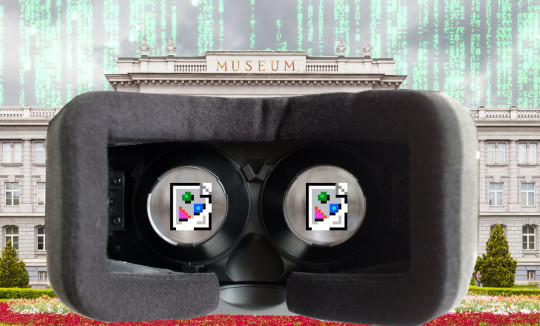
I'll be at the Studio City branch of the LA Public Library tonight (Monday, November 13) at 1830hPT to launch my new novel, The Lost Cause. There'll be a reading, a talk, a surprise guest (!!) and a signing, with books on sale. Tell your friends! Come on down!

The great irony of the platformization of the internet is that platforms are intermediaries, and the original promise of the internet that got so many of us excited about it was disintermediation – getting rid of the middlemen that act as gatekeepers between community members, creators and audiences, buyers and sellers, etc.
The platformized internet is ripe for rent seeking: where the platform captures an ever-larger share of the value generated by its users, making the service worst for both, while lock-in stops people from looking elsewhere. Every sector of the modern economy is less competitive, thanks to monopolistic tactics like mergers and acquisitions and predatory pricing. But with tech, the options for making things worse are infinitely divisible, thanks to the flexibility of digital systems, which means that product managers can keep subdividing the Jenga blocks they pulling out of the services we rely on. Combine platforms with monopolies with digital flexibility and you get enshittification:
https://pluralistic.net/2023/01/21/potemkin-ai/#hey-guys
An enshittified, platformized internet is bad for lots of reasons – it concentrates decisions about who may speak and what may be said into just a few hands; it creates a rich-get-richer dynamic that creates a new oligarchy, with all the corruption and instability that comes with elite capture; it makes life materially worse for workers, users, and communities.
But there are many other ways in which the enshitternet is worse than the old good internet. Today, I want to talk about how the enshitternet affects openness and all that entails. An open internet is one whose workings are transparent (think of "open source"), but it's also an internet founded on access – the ability to know what has gone before, to recall what has been said, and to revisit the context in which it was said.
At last week's Museum Computer Network conference, Aaron Straup Cope gave a talk on museums and technology called "Wishful Thinking – A critical discussion of 'extended reality' technologies in the cultural heritage sector" that beautifully addressed these questions of recall and revisiting:
https://www.aaronland.info/weblog/2023/11/11/therapy/#wishful
Cope is a museums technologist who's worked on lots of critical digital projects over the years, and in this talk, he addresses himself to the difference between the excitement of the galleries, libraries, archives and museums (GLAM) sector over the possibilities of the web, and why he doesn't feel the same excitement over the metaverse, and its various guises – XR, VR, MR and AR.
The biggest reason to be excited about the web was – and is – the openness of disintermediation. The internet was inspired by the end-to-end principle, the idea that the network's first duty was to transmit data from willing senders to willing receivers, as efficiently and reliably as possible. That principle made it possible for whole swathes of people to connect with one another. As Cope writes, openness "was not, and has never been, a guarantee of a receptive audience or even any audience at all." But because it was "easy and cheap enough to put something on the web," you could "leave it there long enough for others to find it."
That dynamic nurtured an environment where people could have "time to warm up to ideas." This is in sharp contrast to the social media world, where "[anything] not immediately successful or viral … was a waste of time and effort… not worth doing." The social media bias towards a river of content that can't be easily reversed is one in which the only ideas that get to spread are those the algorithm boosts.
This is an important way to understand the role of algorithms in the context of the spread of ideas – that without recall or revisiting, we just don't see stuff, including stuff that might challenge our thinking and change our minds. This is a much more materialistic and grounded way to talk about algorithms and ideas than the idea that Big Data and AI make algorithms so persuasive that they can control our minds:
https://pluralistic.net/2023/11/06/attention-rents/#consumer-welfare-queens
As bad as this is in the social media context, it's even worse in the context of apps, which can't be linked into, bookmarked, or archived. All of this made apps an ominous sign right from the beginning:
https://memex.craphound.com/2010/04/01/why-i-wont-buy-an-ipad-and-think-you-shouldnt-either/
Apps interact with law in precisely the way that web-pages don't. "An app is just a web-page wrapped in enough IP to make it a crime to defend yourself against corporate predation":
https://pluralistic.net/2023/08/27/an-audacious-plan-to-halt-the-internets-enshittification-and-throw-it-into-reverse/
Apps are "closed" in every sense. You can't see what's on an app without installing the app and "agreeing" to its terms of service. You can't reverse-engineer an app (to add a privacy blocker, or to change how it presents information) without risking criminal and civil liability. You can't bookmark anything the app won't let you bookmark, and you can't preserve anything the app won't let you preserve.
Despite being built on the same underlying open frameworks – HTTP, HTML, etc – as the web, apps have the opposite technological viewpoint to the web. Apps' technopolitics are at war with the web's technopolitics. The web is built around recall – the ability to see things, go back to things, save things. The web has the technopolitics of a museum:
https://www.aaronland.info/weblog/2014/09/11/brand/#dconstruct
By comparison, apps have the politics of a product, and most often, that product is a rent-seeking, lock-in-hunting product that wants to take you hostage by holding something you love hostage – your data, perhaps, or your friends:
https://www.eff.org/deeplinks/2021/08/facebooks-secret-war-switching-costs
When Anil Dash described "The Web We Lost" in 2012, he was describing a web with the technopolitics of a museum:
where tagging was combined with permissive licenses to make it easy for people to find and reuse each others' stuff;
where it was easy to find out who linked to you in realtime even though most of us were posting to our own sites, which they controlled;
where a link from one site to another meant one person found another person's contribution worthy;
where privacy-invasive bids to capture the web were greeted with outright hostility;
where every service that helped you post things that mattered to you was expected to make it easy for you take that data back if you changed services;
where inlining or referencing material from someone else's site meant following a technical standard, not inking a business-development deal;
https://www.anildash.com/2012/12/13/the_web_we_lost/
Ten years later, Dash's "broken tech/content culture cycle" described the web we live on now:
https://www.anildash.com/2022/02/09/the-stupid-tech-content-culture-cycle/
found your platform by promising to facilitate your users' growth;
order your technologists and designers to prioritize growth above all other factors and fire anyone who doesn't deliver;
grow without regard to the norms of your platform's users;
plaster over the growth-driven influx of abusive and vile material by assigning it to your "most marginalized, least resourced team";
deliver a half-assed moderation scheme that drives good users off the service and leaves no one behind but griefers, edgelords and trolls;
steadfastly refuse to contemplate why the marginalized users who made your platform attractive before being chased away have all left;
flail about in a panic over illegal content, do deals with large media brands, seize control over your most popular users' output;
"surface great content" by algorithmically promoting things that look like whatever's successful, guaranteeing that nothing new will take hold;
overpay your top performers for exclusivity deals, utterly neglect any pipeline for nurturing new performers;
abuse your creators the same ways that big media companies have for decades, but insist that it's different because you're a tech company;
ignore workers who warn that your product is a danger to society, dismiss them as "millennials" (defined as "anyone born after 1970 or who has a student loan")
when your platform is (inevitably) implicated in a murder, have a "town hall" overseen by a crisis communications firm;
pay the creator who inspired the murder to go exclusive on your platform;
dismiss the murder and fascist rhetoric as "growing pains";
when truly ghastly stuff happens on your platform, give your Trust and Safety team a 5% budget increase;
chase growth based on "emotionally engaging content" without specifying whether the emotions should be positive;
respond to ex-employees' call-outs with transient feelings of guilt followed by dismissals of "cancel culture":
fund your platforms' most toxic users and call it "free speech";
whenever anyone disagrees with any of your decisions, dismiss them as being "anti-free speech";
start increasing how much your platform takes out of your creators' paychecks;
force out internal dissenters, dismiss external critics as being in conspiracy with your corporate rivals;
once regulation becomes inevitable, form a cartel with the other large firms in your sector and insist that the problem is a "bad algorithm";
"claim full victim status," and quit your job, complaining about the toll that running a big platform took on your mental wellbeing.
https://pluralistic.net/2022/02/18/broken-records/#dashes
The web wasn't inevitable – indeed, it was wildly improbable. Tim Berners Lee's decision to make a new platform that was patent-free, open and transparent was a complete opposite approach to the strategy of the media companies of the day. They were building walled gardens and silos – the dialup equivalent to apps – organized as "branded communities." The way I experienced it, the web succeeded because it was so antithetical to the dominant vision for the future of the internet that the big companies couldn't even be bothered to try to kill it until it was too late.
Companies have been trying to correct that mistake ever since. After three or four attempts to replace the web with various garbage systems all called "MSN," Microsoft moved on to trying to lock the internet inside a proprietary browser. Years later, Facebook had far more success in an attempt to kill HTML with React. And of course, apps have gobbled up so much of the old, good internet.
Which brings us to Cope's views on museums and the metaverse. There's nothing intrinsically proprietary about virtual worlds and all their permutations. VRML is a quarter of a century old – just five years younger than Snow Crash:
https://en.wikipedia.org/wiki/VRML
But the current enthusiasm for virtual worlds isn't merely a function of the interesting, cool and fun experiences you can have in them. Rather, it's a bid to kill off whatever is left of the old, good web and put everything inside a walled garden. Facebook's metaverse "is more of the same but with a technical footprint so expensive and so demanding that it all but ensures it will only be within the means of a very few companies to operate."
Facebook's VR headsets have forward-facing cameras, turning every users into a walking surveillance camera. Facebook put those cameras there for "pass through" – so they can paint the screens inside the headset with the scene around you – but "who here believes that Facebook doesn't have other motives for enabling an always-on camera capturing the world around you?"
Apple's VisionPro VR headset is "a near-perfect surveillance device," and "the only thing to save this device is the trust that Apple has marketed its brand on over the last few years." Cope notes that "a brand promise is about as fleeting a guarantee as you can get." I'll go further: Apple is already a surveillance company:
https://pluralistic.net/2022/11/14/luxury-surveillance/#liar-liar
The technopolitics of the metaverse are the opposite of the technopolitics of the museum – even moreso than apps. Museums that shift their scarce technology budgets to virtual worlds stand a good chance of making something no one wants to use, and that's the best case scenario. The worst case is that museums make a successful project inside a walled garden, one where recall is subject to corporate whim, and help lure their patrons away from the recall-friendly internet to the captured, intermediated metaverse.
It's true that the early web benefited from a lot of hype, just as the metaverse is enjoying today. But the similarity ends there: the metaverse is designed for enclosure, the web for openness. Recall is a historical force for "the right to assembly… access to basic literacy… a public library." The web was "an unexpected gift with the ability to change the order of things; a gift that merits being protected, preserved and promoted both internally and externally." Museums were right to jump on the web bandwagon, because of its technopolitics. The metaverse, with its very different technopolitics, is hostile to the very idea of museums.
In joining forces with metaverse companies, museums strike a Faustian bargain, "because we believe that these places are where our audiences have gone."
The GLAM sector is devoted to access, to recall, and to revisiting. Unlike the self-style free speech warriors whom Dash calls out for self-serving neglect of their communities, the GLAM sector is about preservation and access, the true heart of free expression. When a handful of giant companies organize all our discourse, the ability to be heard is contingent on pleasing the ever-shifting tastes of the algorithm. This is the problem with the idea that "freedom of speech isn't freedom of reach" – if a platform won't let people who want to hear from you see what you have to say, they are indeed compromising freedom of speech:
https://pluralistic.net/2022/12/10/e2e/#the-censors-pen
Likewise, "censorship" is not limited to "things that governments do." As Ada Palmer so wonderfully describes it in her brilliant "Why We Censor: from the Inquisition to the Internet" speech, censorship is like arsenic, with trace elements of it all around us:
https://www.youtube.com/watch?v=uMMJb3AxA0s
A community's decision to ban certain offensive conduct or words on pain of expulsion or sanction is censorship – but not to the same degree that, say, a government ban on expressing certain points of view is. However, there are many kinds of private censorship that rise to the same level as state censorship in their impact on public discourse (think of Moms For Liberty and their book-bannings).
It's not a coincidence that Palmer – a historian – would have views on censorship and free speech that intersect with Cope, a museum worker. One of the most brilliant moments in Palmer's speech is where she describes how censorship under the Inquistion was not state censorship – the Inquisition was a multinational, nongovernmental body that was often in conflict with state power.
Not all intermediaries are bad for speech or access. The "disintermediation" that excited early web boosters was about escaping from otherwise inescapable middlemen – the people who figured out how to control and charge for the things we did with one another.
When I was a kid, I loved the writing of Crad Kilodney, a short story writer who sold his own self-published books on Toronto street-corners while wearing a sign that said "VERY FAMOUS CANADIAN AUTHOR, BUY MY BOOKS" (he also had a sign that read, simply, "MARGARET ATWOOD"). Kilodney was a force of nature, who wrote, edited, typeset, printed, bound, and sold his own books:
https://www.theglobeandmail.com/arts/books/article-late-street-poet-and-publishing-scourge-crad-kilodney-left-behind-a/
But there are plenty of writers out there that I want to hear from who lack the skill or the will to do all of that. Editors, publishers, distributors, booksellers – all the intermediaries who sit between a writer and their readers – are not bad. They're good, actually. The problem isn't intermediation – it's capture.
For generations, hucksters have conned would-be writers by telling them that publishing won't buy their books because "the gatekeepers" lack the discernment to publish "quality" work. Friends of mine in publishing laughed at the idea that they would deliberately sideline a book they could figure out how to sell – that's just not how it worked.
But today, monopolized film studios are literally annihilating beloved, high-priced, commercially viable works because they are worth slightly more as tax writeoffs than they are as movies:
https://deadline.com/2023/11/coyote-vs-acme-shelved-warner-bros-discovery-writeoff-david-zaslav-1235598676/
There's four giant studios and five giant publishers. Maybe "five" is the magic number and publishing isn't concentrated enough to drop whole novels down the memory hole for a tax deduction, but even so, publishing is trying like hell to shrink to four:
https://pluralistic.net/2022/11/07/random-penguins/#if-you-wanted-to-get-there-i-wouldnt-start-from-here
Even as the entertainment sector is working to both literally and figuratively destroy our libraries, the cultural heritage sector is grappling with preserving these libraries, with shrinking budgets and increased legal threats:
https://blog.archive.org/2023/03/25/the-fight-continues/
I keep meeting artists of all description who have been conditioned to be suspicious of anything with the word "open" in its name. One colleague has repeatedly told me that fighting for the "open internet" is a self-defeating rhetorical move that will scare off artists who hear "open" and think "Big Tech ripoff."
But "openness" is a necessary precondition for preservation and access, which are the necessary preconditions for recall and revisiting. Here on the last, melting fragment of the open internet, as tech- and entertainment-barons are seizing control over our attention and charging rent on our ability to talk and think together, openness is our best hope of a new, good internet. T
he cultural heritage sector wants to save our creative works. The entertainment and tech industry want to delete them and take a tax writeoff.
As a working artist, I know which side I'm on.

If you'd like an essay-formatted version of this post to read or share, here's a link to it on pluralistic.net, my surveillance-free, ad-free, tracker-free blog:
https://pluralistic.net/2023/11/13/this-is-for-everyone/#revisiting

Image: Diego Delso (modified) https://commons.wikimedia.org/wiki/File:Museo_Mimara,_Zagreb,_Croacia,_2014-04-20,_DD_01.JPG
CC BY-SA 4.0 https://creativecommons.org/licenses/by-sa/4.0/
#pluralistic#ar#xr#vr#augmented reality#extended reality#virtual reality#museums#cultural preservation#aaron cope#Museum Computer Network#cultural heritage#glam#access#open access#revisiting#mr#mixed reality#asynchronous#this is for everyone#freedom of reach#gatekeepers#metaverse#technofeudalism#privacy#brick on the face#rent-seeking
188 notes
·
View notes
Text




Saxan in Coral Island.
Happy New Year to you. My lazy son as NPC and LI. I think this took about a month to make. 70% of that time is taken by the wedding outfit alone. Commentary on each outfits and his personality backstory under Read More if you're interested :)
Your local veterinarian. He was a bratty and wild child, something his parents tried to coach him out of. Instead, he developed into a lazy and apathetic young man, and eventually his parents learned to accept the person he is. However, he sensed that he's the black sheep or "failure" compared to his successful big twin sisters, irregardless of how baseless it is. Cares for animals, not so much for humans. His character arc can go two ways depending on what you chose during the dialogues. His birthday is on 28th Spring.
He's my Star Wars OC actually. He's a Zakuulan Prince, so I incorporated that aspect into his merfolk form. If you don't see him around town, he might be underwater!
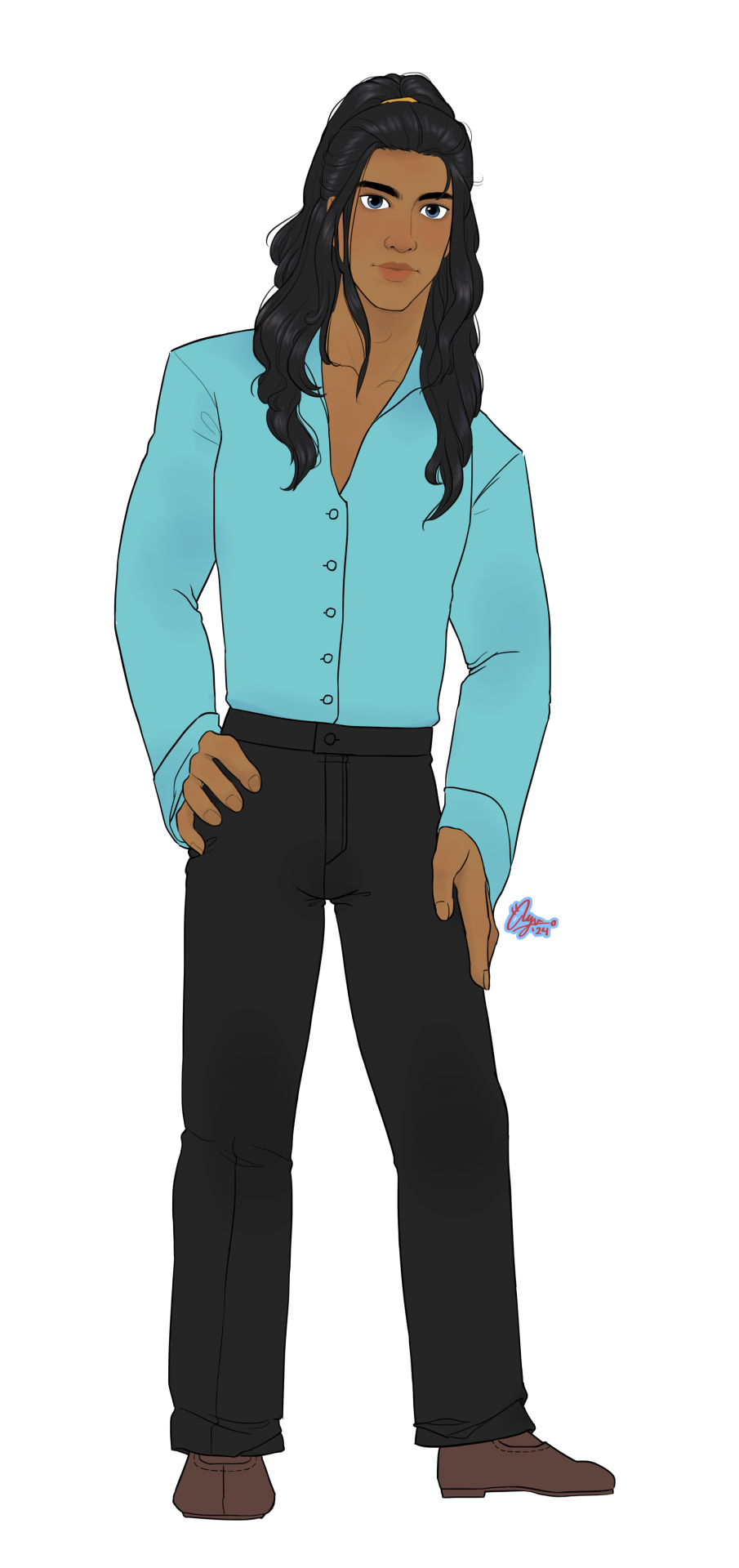
His spring outfit is based on the doodle I have of him from an ask lol. I kinda like the color cyan on him!

I forgot that Scott has a similar hibiscus shirt so I figured it was too late to modify it... Oh well.

Not much to say other than I kinda have a hard time deciding what he should wear for autumn.

He looks super snug. I really gotta learn how to draw coats to make them convicingly thick idk. He lowkey dislikes winter.
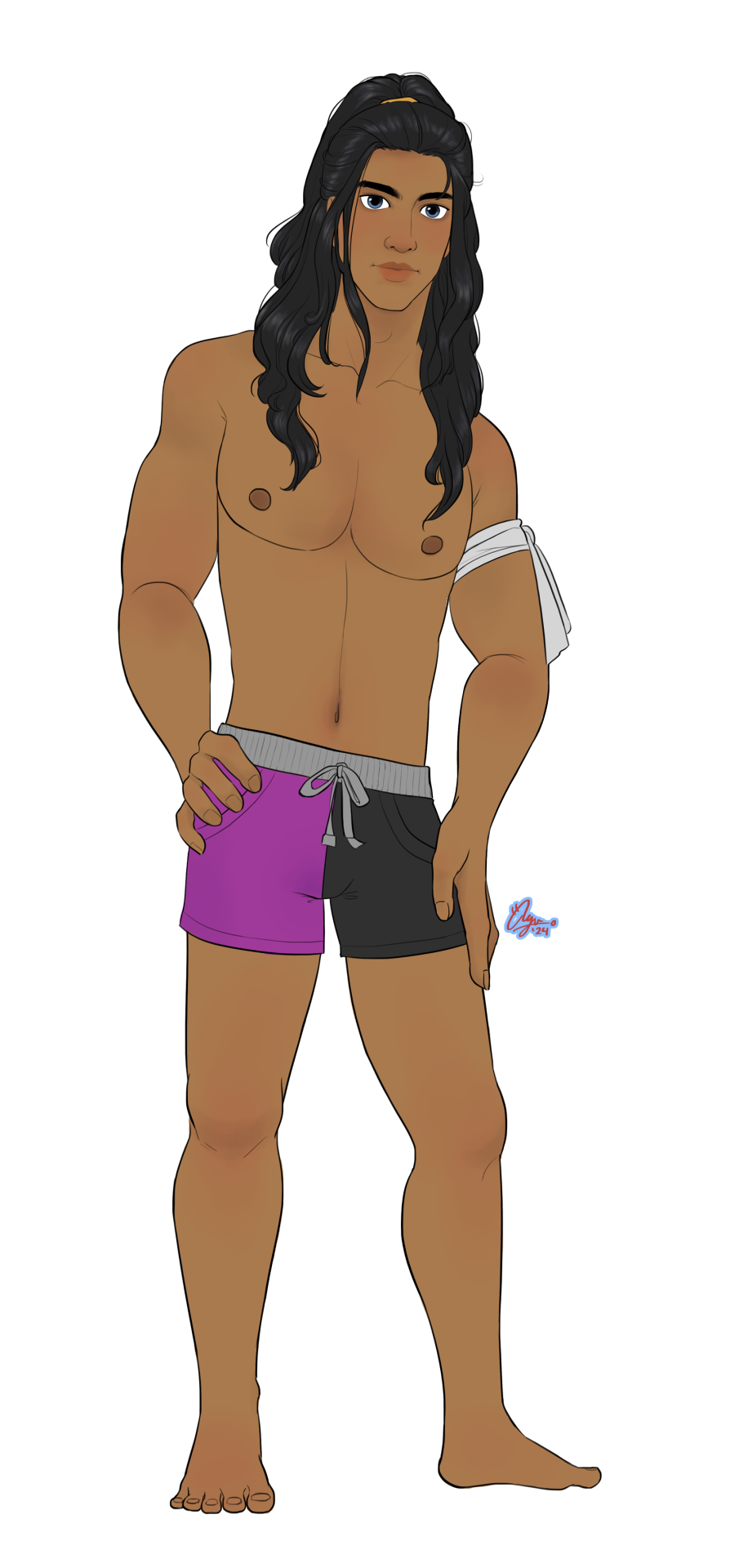
I kinda debated on if I should put body hair on him but I decided not to seeing almost every male NPC has them. I think. Yes, it's the ace flag colors.

If you marry him he'll appear in Aesan Gede, the South Sumatran (Palembang) traditional wedding attire. I can't really have his hair free because it'll get stuck on all the golden bits but I kinda am not feeling the bun either so back ponytail it is. Debated whether I should draw the Sundanese one (am half-Sundanese) because it's easier but South Sumatra has been under-represented in Indonesian media so my Srivijayan pride kicked in. Also tumblr keeps killing the transparency for some reason >;[
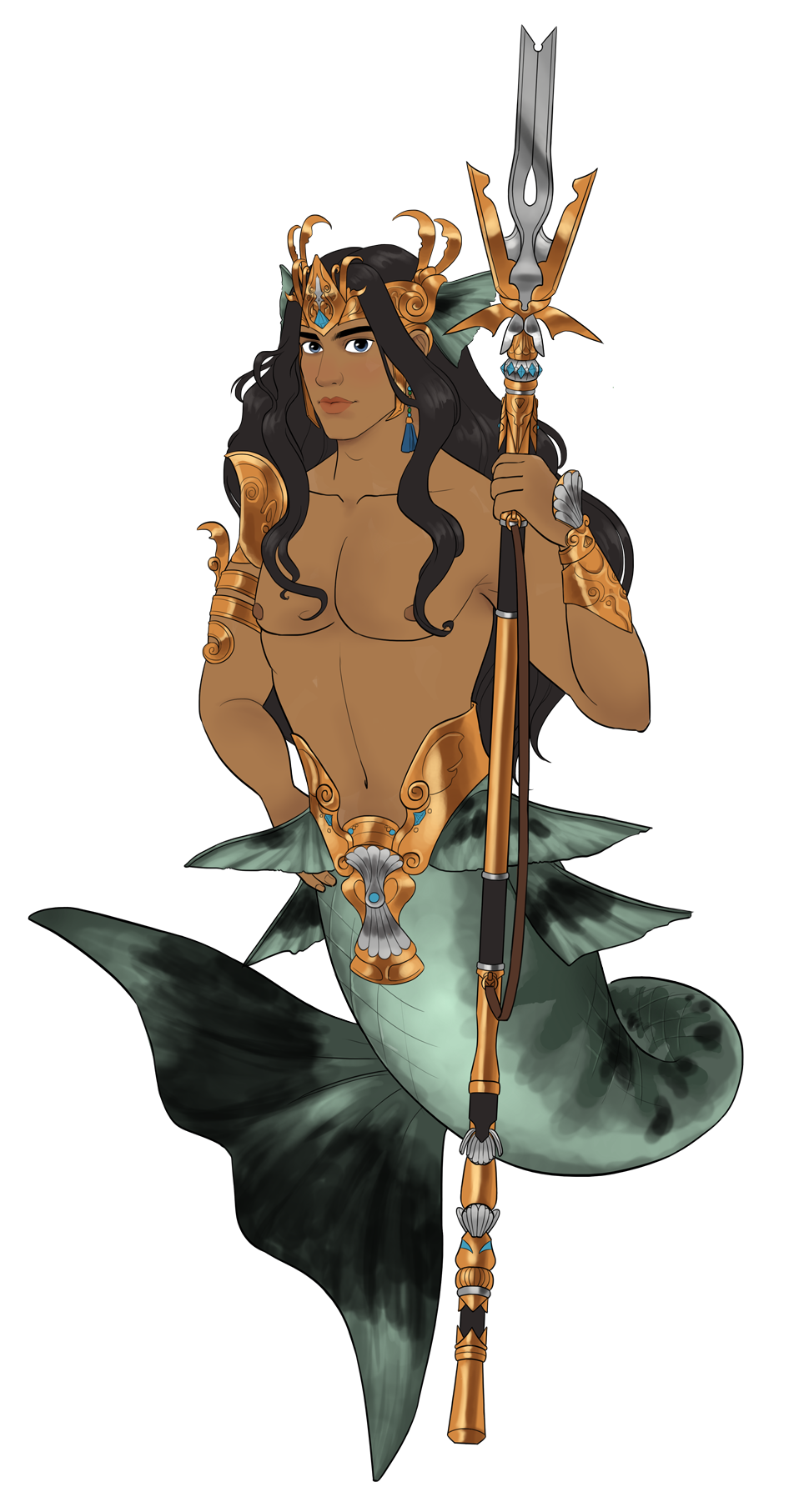
Does he look Prince-ly enough here? He's based on the barracuda fish. Considered making him a naga like the rest of the in-game merfolk royal family but I've actually drawn him as a merman before so I want to keep him as a... fish. blublubblub.
I'm currently playing his twin sisters and I'm having a hard time choosing the LIs for them helpppp
And no, sadly I'm not a backer on Kickstarter (source: golongan miskin) this is just art.
#coral island#my art#swtor oc#coral island oc#artists on tumblr#asian culture#palembang#indonesia#indonesian culture#cultural clothing#merman#potato prince#potat prince#heritage#indoblr#illustration#concept art#character concept#asian value#traditional clothing#cultural heritage
103 notes
·
View notes
Text

#@so.kass#📸:@le_collectif_#blackisbeautiful#blackwomen#blackbeauty#sénégal#senegalesebeauty#blackandbeautiful#blackwomenbelike#blackwomenaredivine#darkskinbeauty#darkskinappreciation#africanheadwraps#african prints#africandrip#africanfashion#african heritage#africamatters#african ancestry#africa#afrocentricstyle#afrocentrism#african diaspora#africanheritage#africanculture#cultural heritage#cultural practices#blackgirlaesthetic#blackgirlmagic#blacktumblr
179 notes
·
View notes